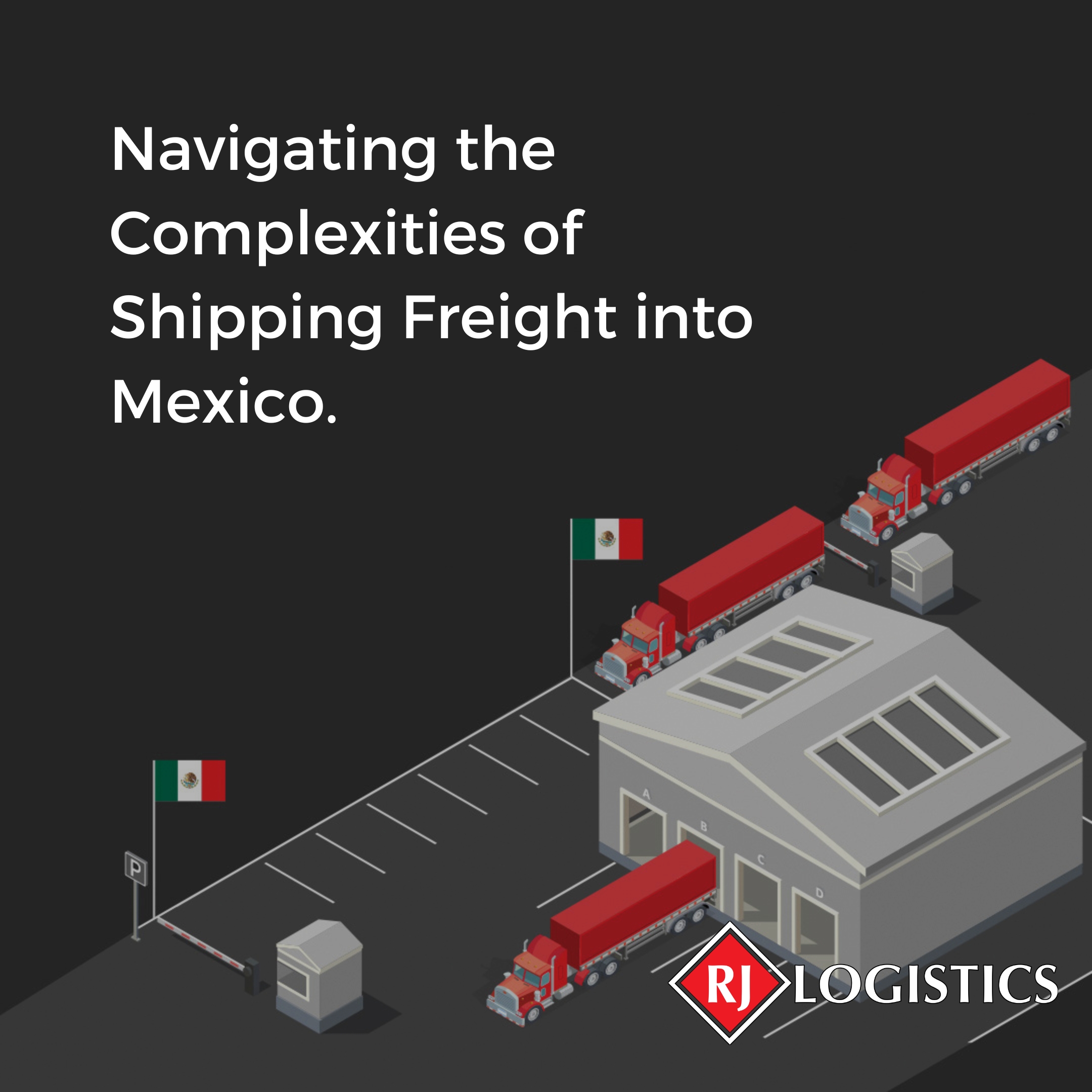As a third-party logistics provider, RJ Logistics is dedicated to building meaningful relationships with our customers and providing the highest level of customer service in the logistics industry. One of our specialties is cross-border shipping capabilities for freight going in and out of Mexico. With this in mind, we want to share with you five key things that customers need to know when shipping freight into Mexico.
- Documentation is Key
Shipping freight into Mexico requires proper documentation, including a commercial invoice, packing list, and bill of lading. It is crucial to have these documents in order to ensure a smooth and seamless customs clearance process. Additionally, the commercial invoice should clearly state the value of the goods being shipped, the HS code, and the origin of the goods. It is also important to note that Mexican customs may request additional documentation, such as a certificate of origin or a NAFTA certificate, depending on the type of goods being shipped.
- Import Restrictions and Regulations
Mexico has import restrictions and regulations in place for certain goods, such as hazardous materials, firearms, and textiles. It is important to research these restrictions and regulations in advance to ensure that the goods being shipped are not subject to any prohibitions or limitations. RJ Logistics has a thorough understanding of Mexican customs regulations and can assist customers with navigating any restrictions or regulations.
- Duty and Tax Considerations
When shipping goods into Mexico, customers should be aware of the duties and taxes that may be imposed. Mexican customs imposes duties and taxes based on the value of the goods and the HS code. To minimize the cost of duties and taxes, it is important to accurately value the goods and to obtain the correct HS code. RJ Logistics has a deep understanding of Mexican customs duties and taxes and can assist customers in reducing these costs.
- Lead Times
Lead times for shipping freight into Mexico can vary, depending on the mode of transportation and the customs clearance process. For example, shipping by air typically has a shorter lead time compared to shipping by sea. Additionally, the customs clearance process can take anywhere from a few hours to several days, depending on the volume of goods being shipped and the complexity of the shipment. It is important to plan ahead and allow sufficient lead time to ensure that the shipment arrives on time.
- Customs Brokers and Freight Forwarders
Customs brokers and freight forwarders play a crucial role in the customs clearance process for shipping freight into Mexico. A customs broker is responsible for completing the necessary documentation and navigating the customs regulations, while a freight forwarder is responsible for arranging the transportation of the goods. RJ Logistics is a full-service logistics provider and can assist customers with choosing both the proper customers broker and freight forwarding services required for shipping freight into Mexico.
In conclusion, shipping freight into Mexico can be complex and requires careful planning and preparation. Customers should be aware of the documentation requirements, import restrictions and regulations, duty and tax considerations, lead times, and the role of customs brokers and freight forwarders. RJ Logistics has the expertise and experience to assist customers in navigating these complexities and ensuring a seamless customs clearance process.
If you’re looking to ship freight into Mexico, look no further than RJ Logistics. Our team of experts will help you navigate the complexities of the customs clearance process and ensure a smooth and seamless shipment. Contact us today to learn more.






